Drawing on Guildhall Library’s remarkable Shakespeare collections, this exhibition examines the history of the printing of William Shakespeare’s plays, from the small ‘Quartos’ of the late 16th century and the Folios of the 17th century, to the reworking of the text in the 18th century and the rediscovery of the original texts in the 19th century …
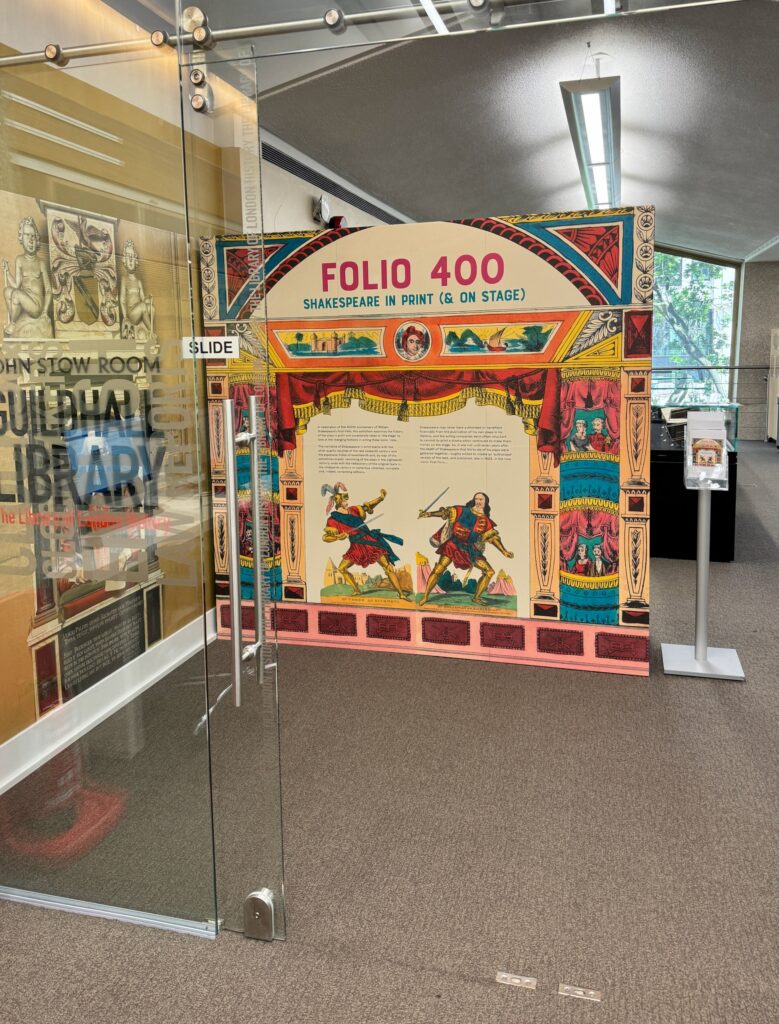
Just inside the door you are greeted with an image of the funerary monument of William Shakespeare in Holy Trinity Church, Stratford-upon-Avon circa 1616-1622 …

There are a series of excellent, informative panels …
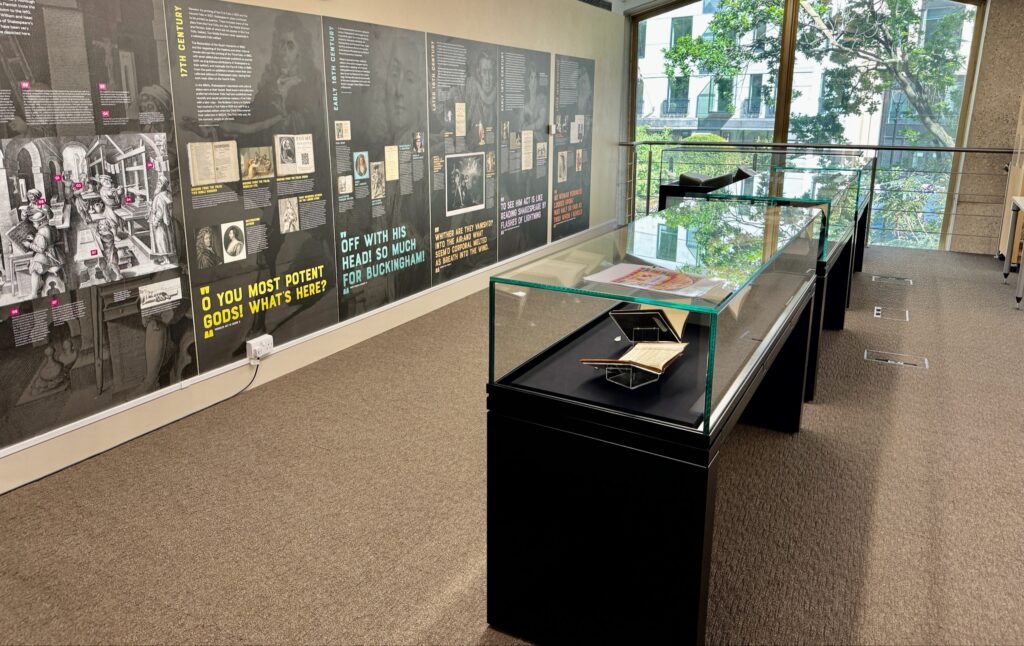
They range over subjucts such as the difference between a Folio and a Quarto …
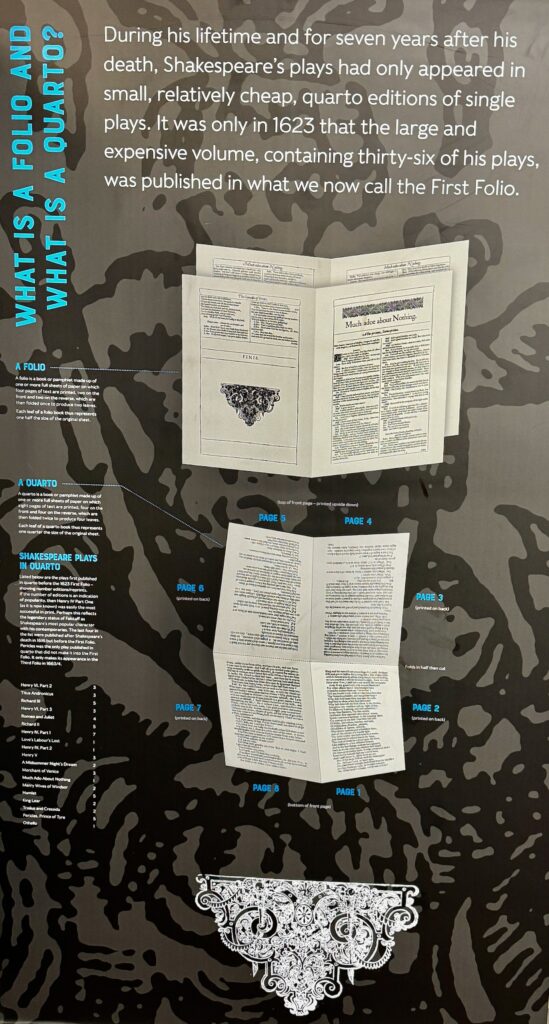
… printing technology …
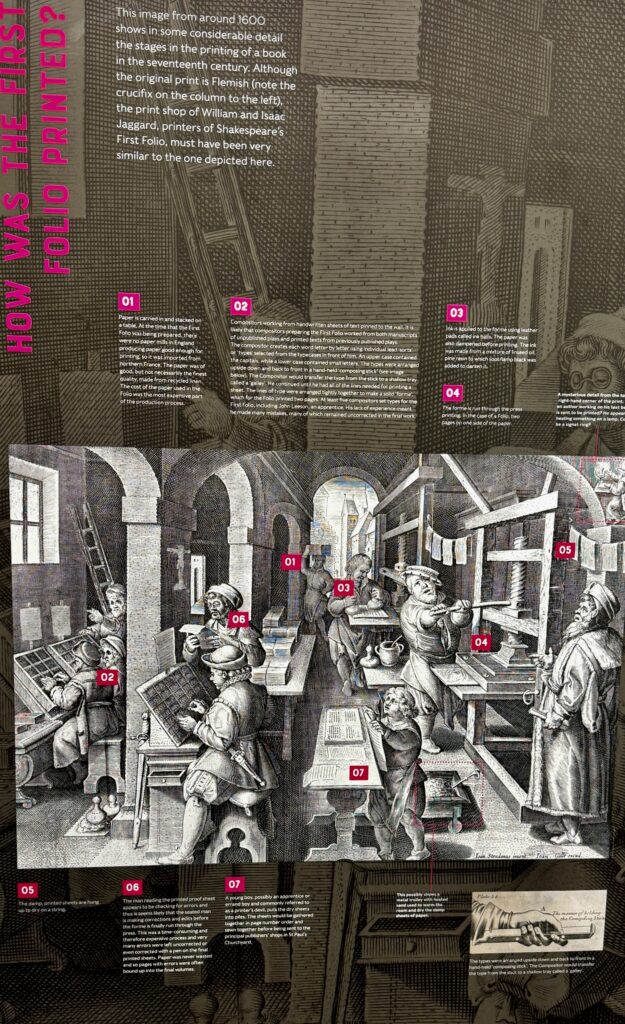
…and how the works were viewed and appreciated over the centuries …
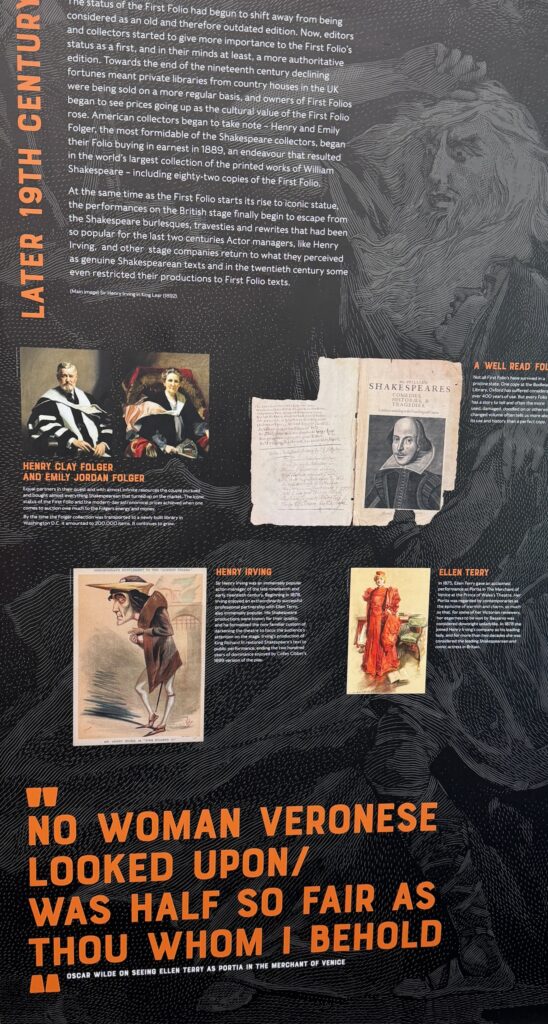
The books, of course, are the stars of the show (and they do not all relate solely to Shakespeare).
It was not until some years after his death that the majority of his plays were gathered together, edited to create a definitive version of the text, and published 400 years ago in the now iconic First Folio, 1632.
And here it is in facsimile …
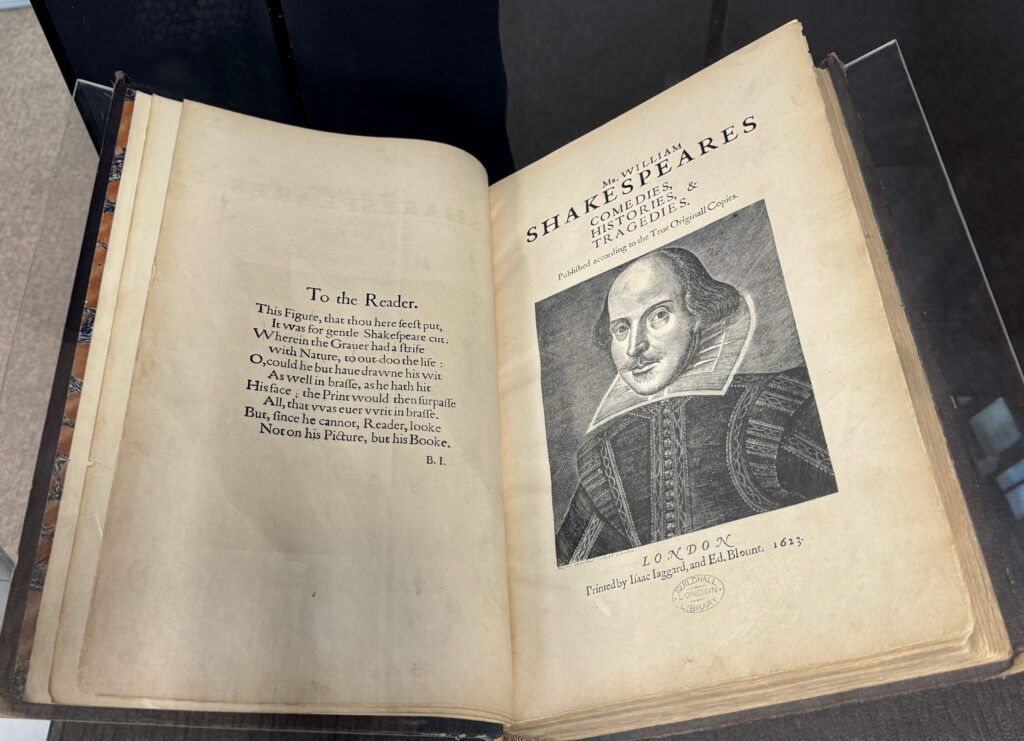
The engraved portriat by Martin Droeshout is one of the few likenesses with any claim to authenticity.
A facsimile of the Second Folio, also published in 1632 …

An original Third Folio, 1664 …
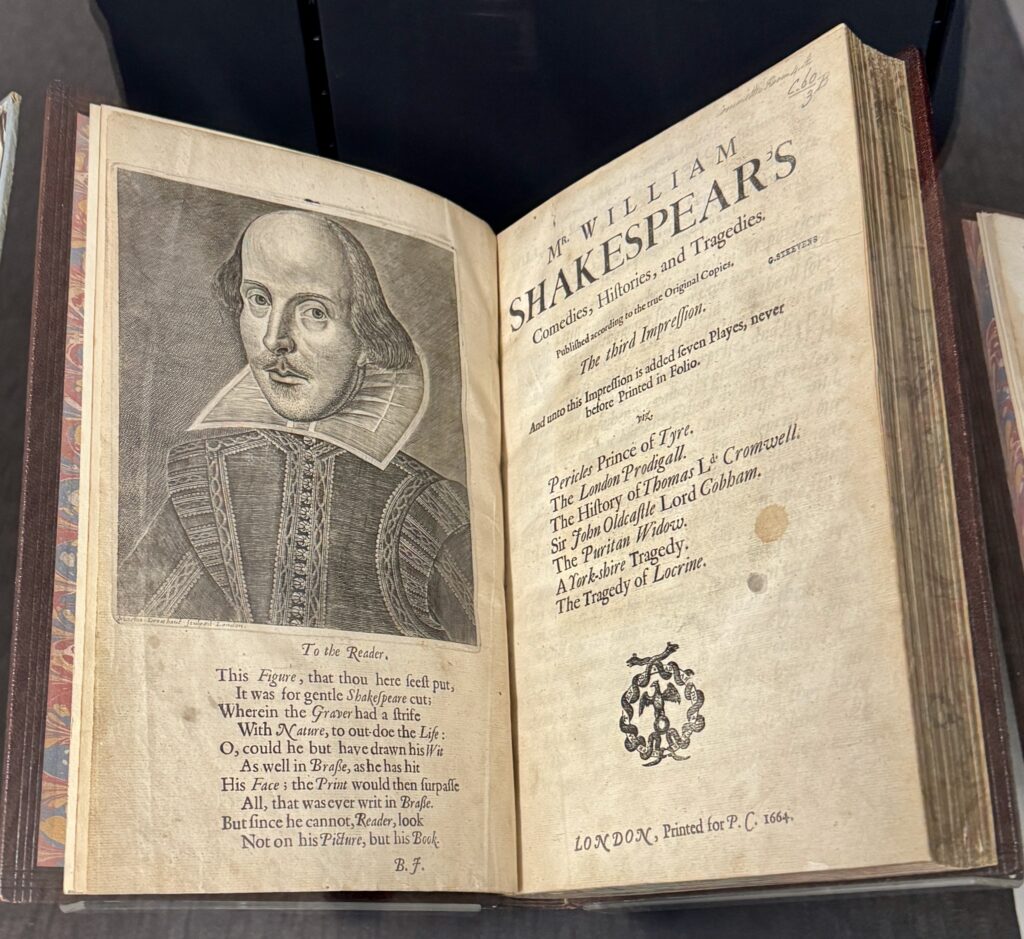
And the Fourth, 1685 …
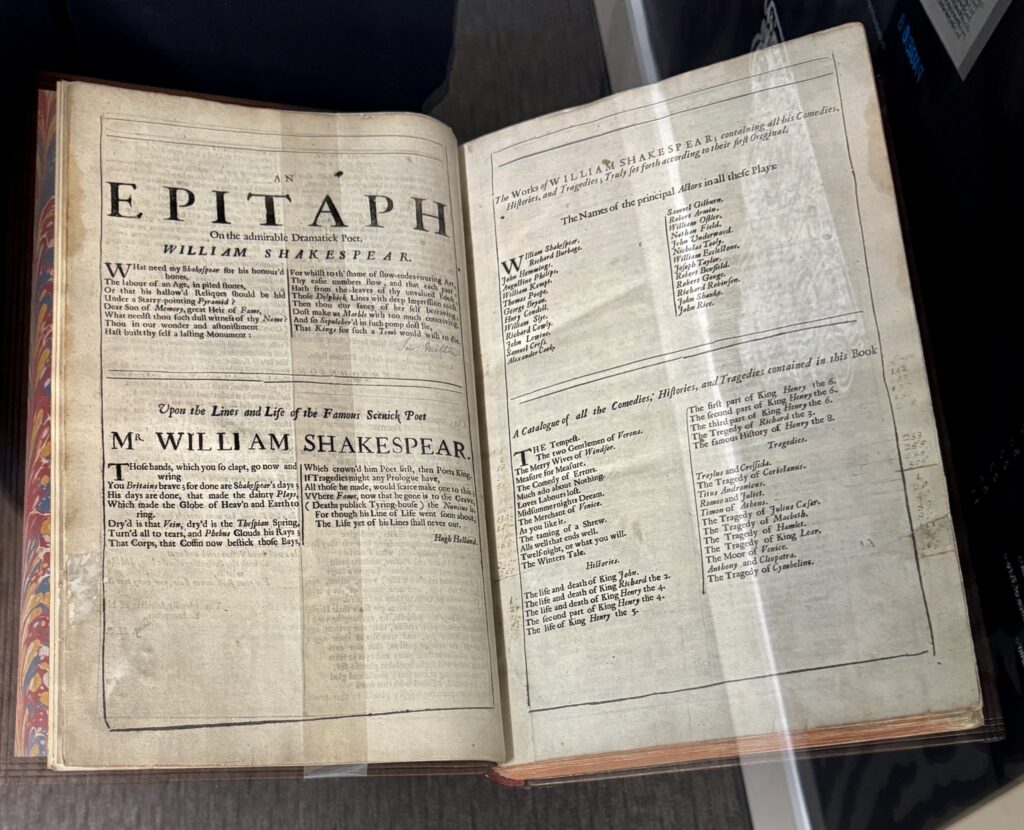
The Library Shakespeare – An example of the late 19th century emergence of ‘gift books’, nicely bound with coloured illustrations …
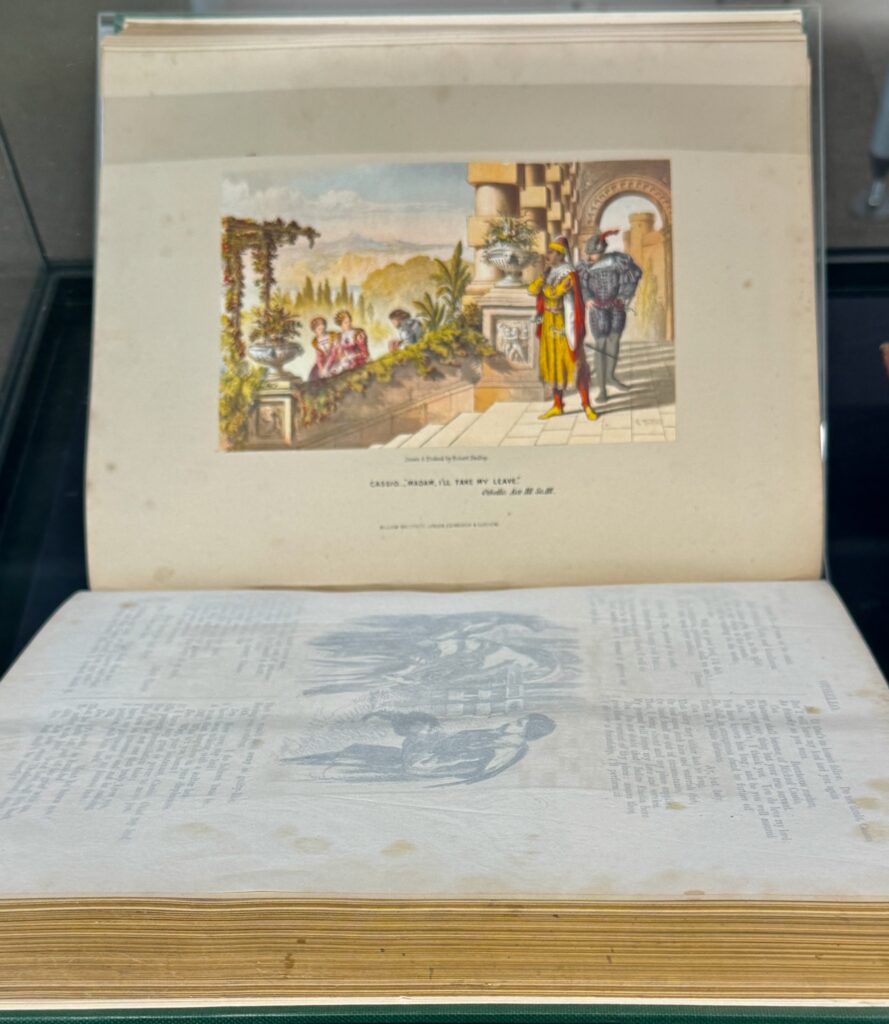
There are other delights on display.
The Knight of the Burning Pestle by Francis Beaumont, printed in 1613 …
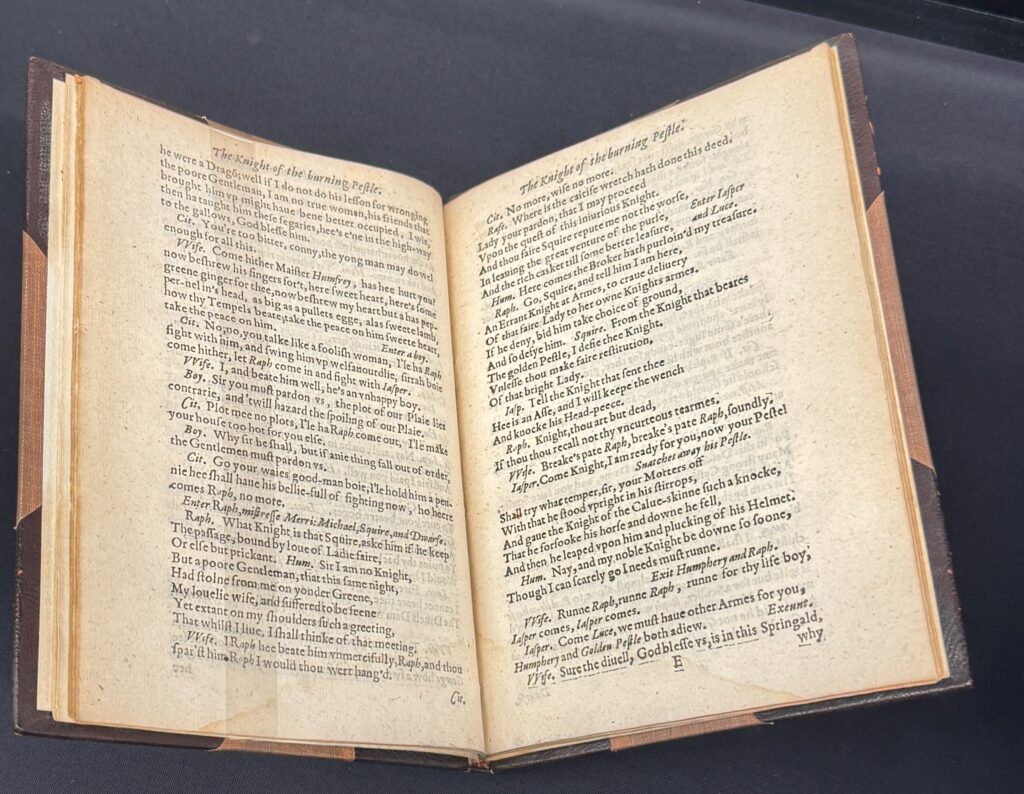
An 1853 spoof comic version of Macbeth Macbeth Travestie. Macbeth somewhat removed from the text of Shakespear: in two acts …
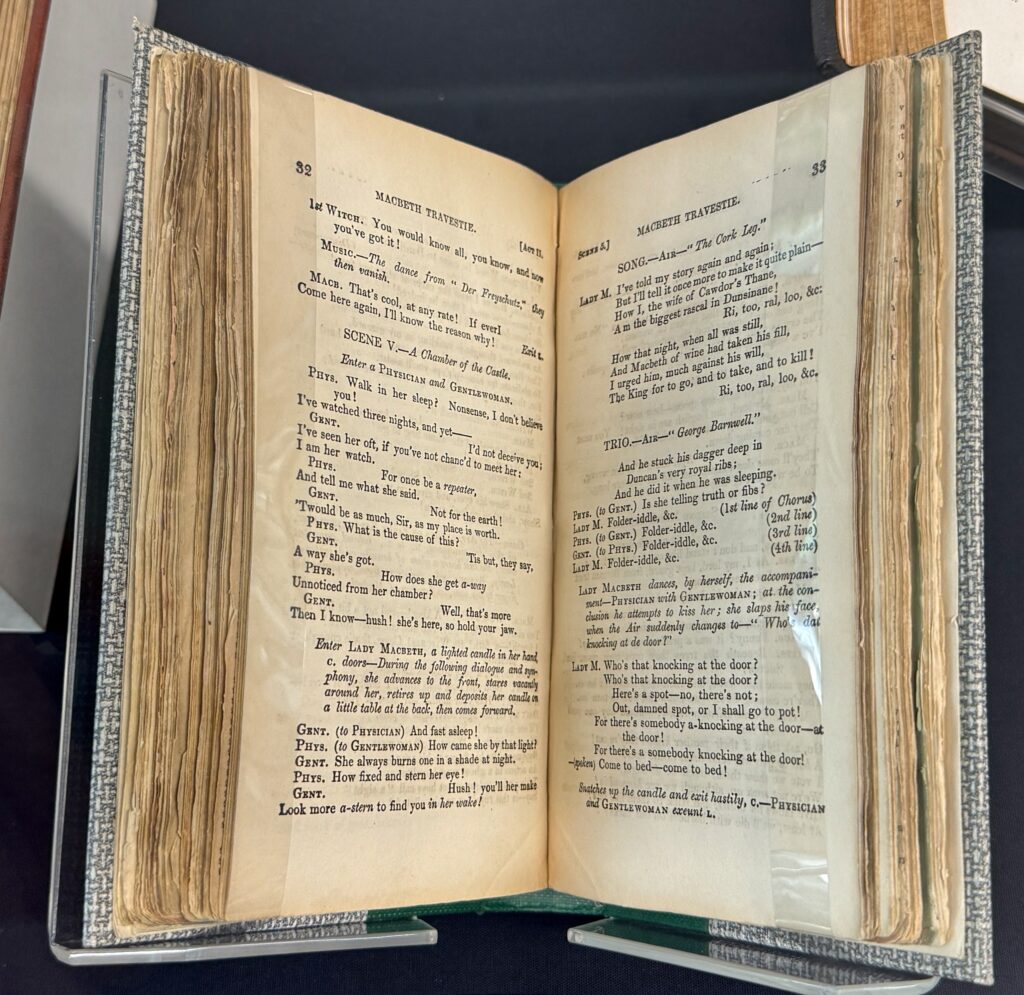
There are almost thirty items in the exhibition …
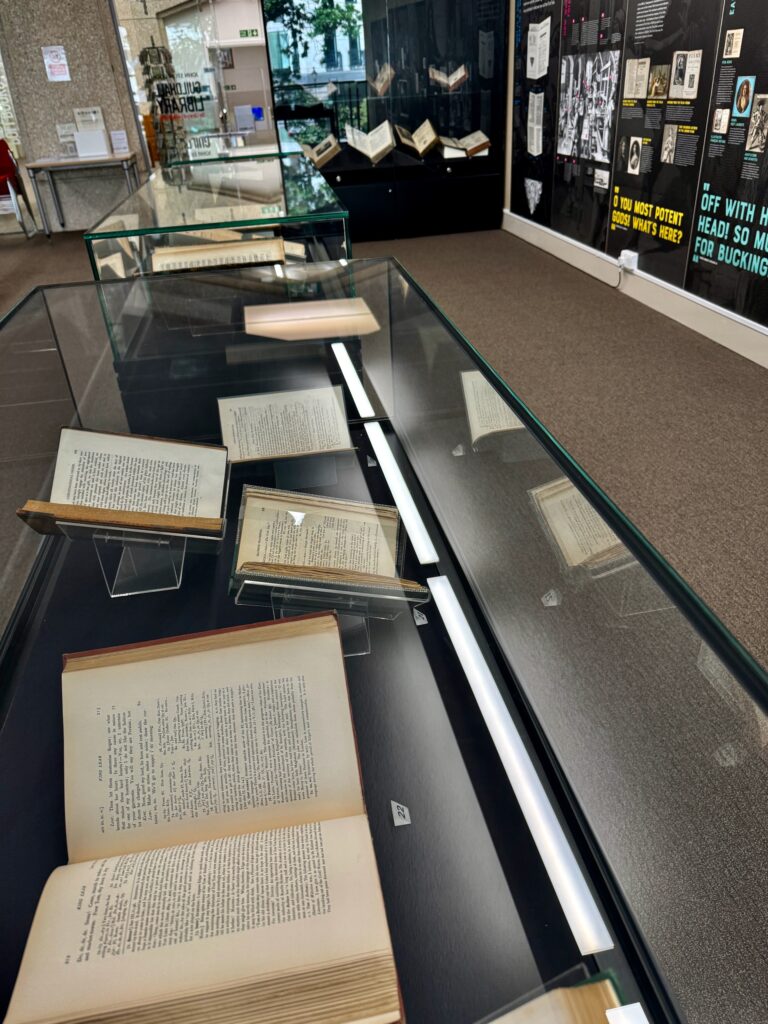
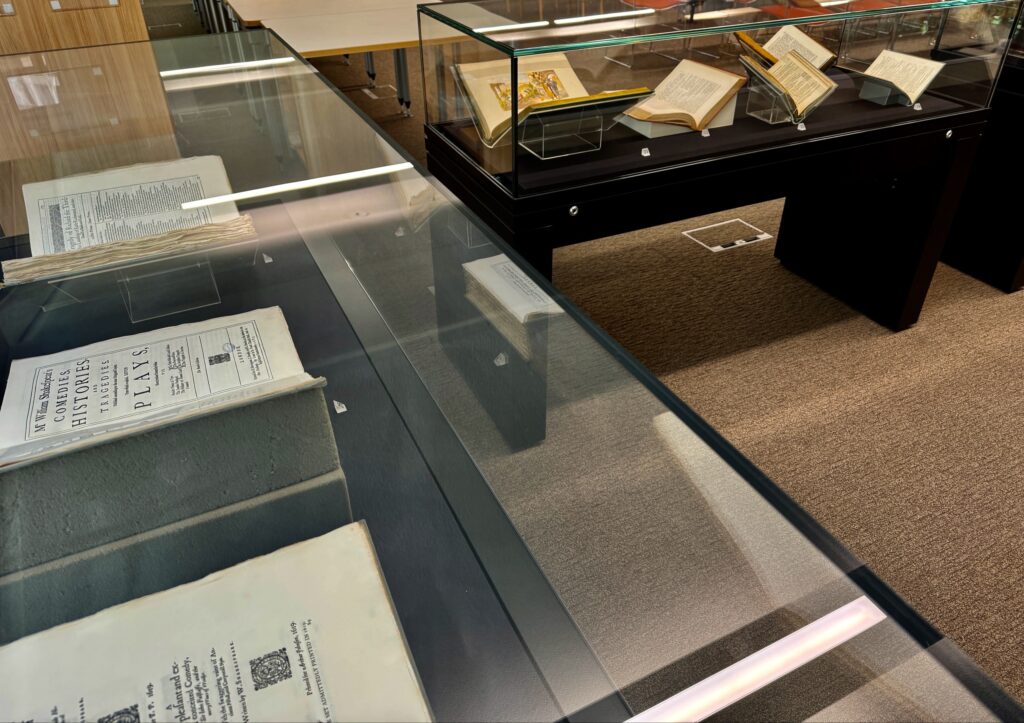
… and there is a splendid free guide …
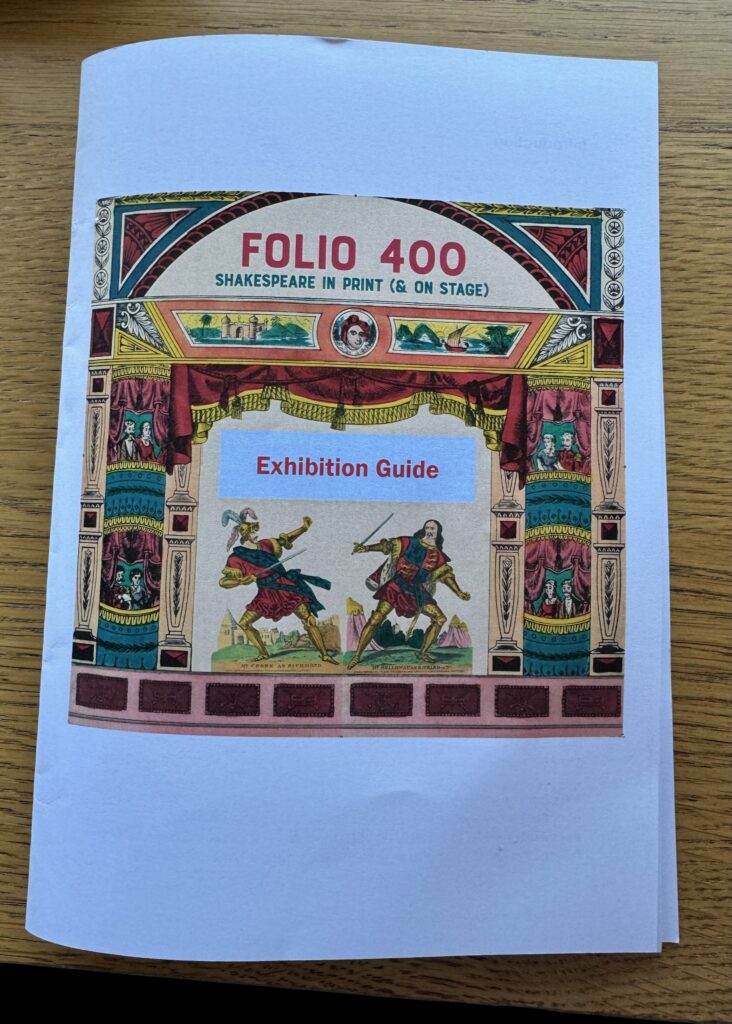
There is also an interesting photowall showing some of the Guildhall Library’s other treasures …
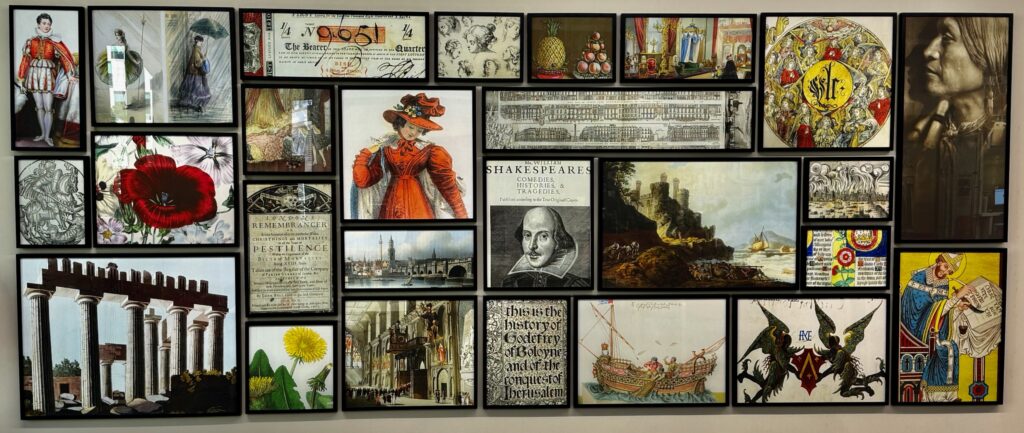
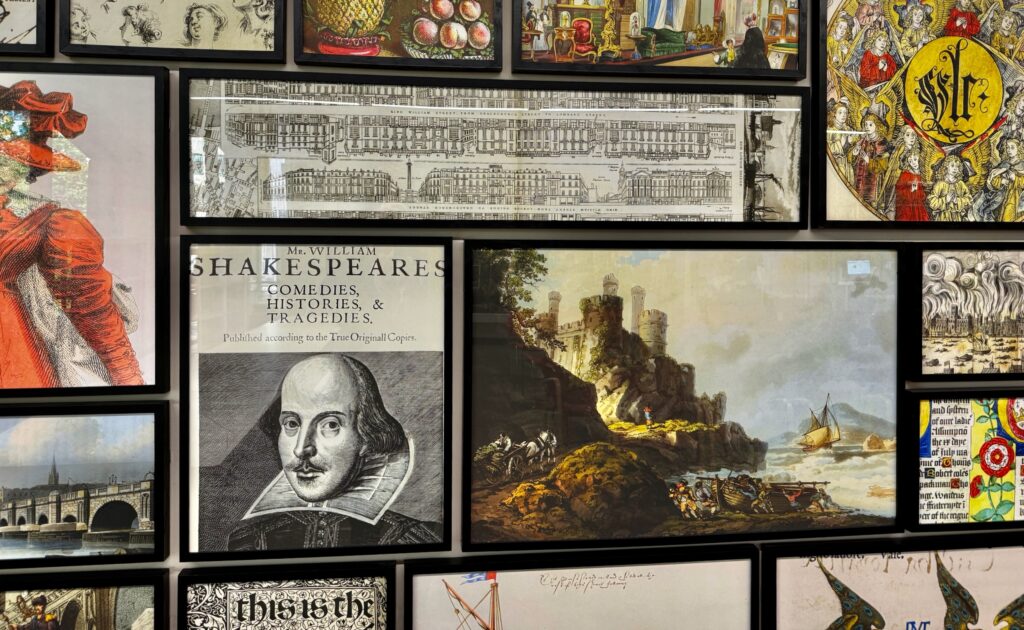
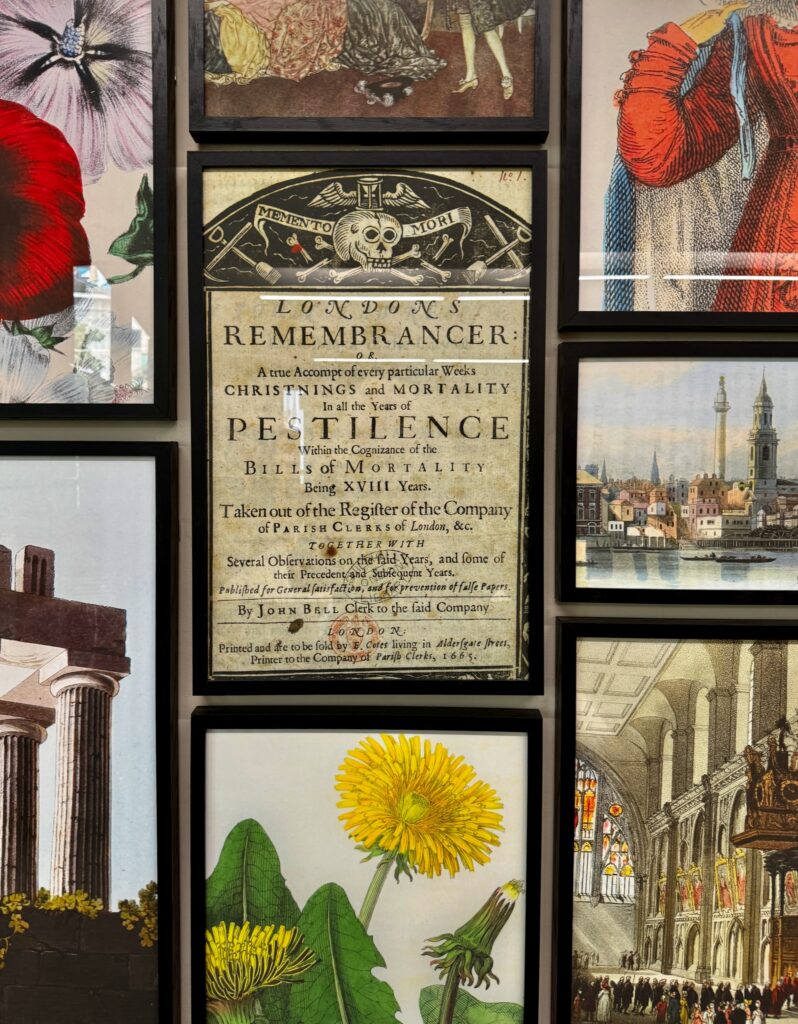
After you leave the building, walk across the road to the little green space on the corner of Aldermanbury and Love Lane …
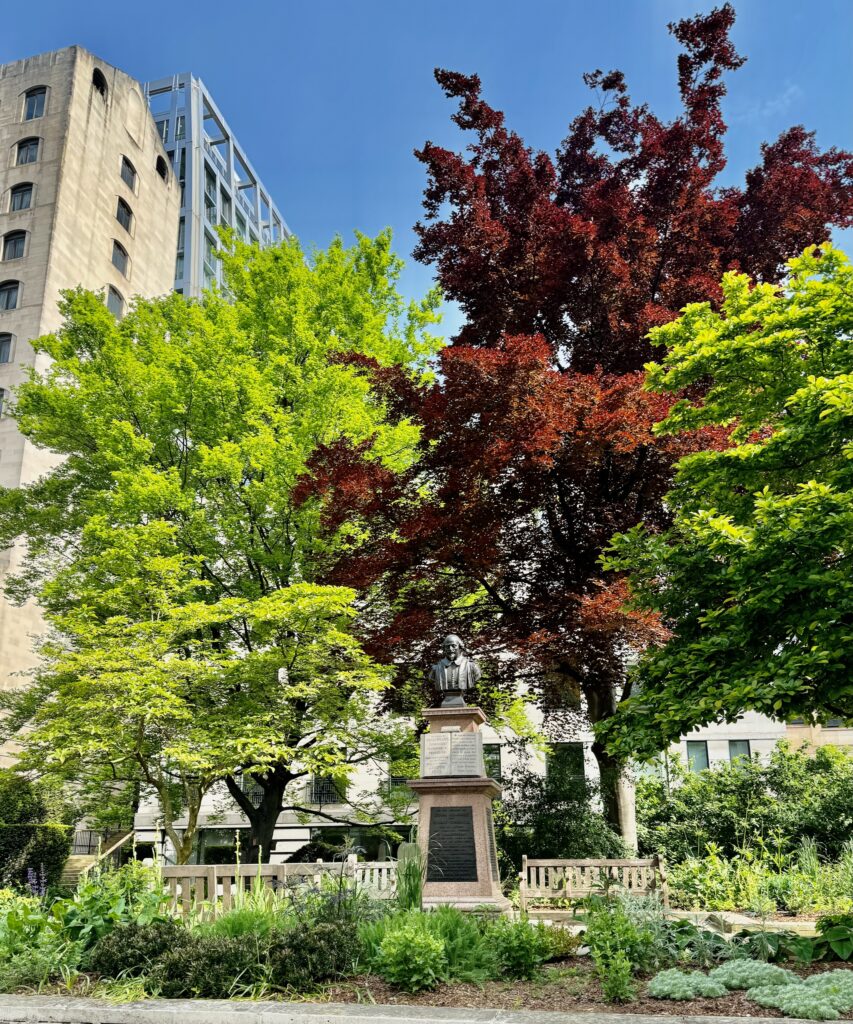
Constructed in 1896, this pink granite monument stands within the former churchyard of St Mary Aldermanbury. Its primary purpose is to honour the First Folio of Shakespeare’s plays, but it also serves as a tribute to Henry Condell and John Heminge, two associates of the Bard who worked with him at the Globe …
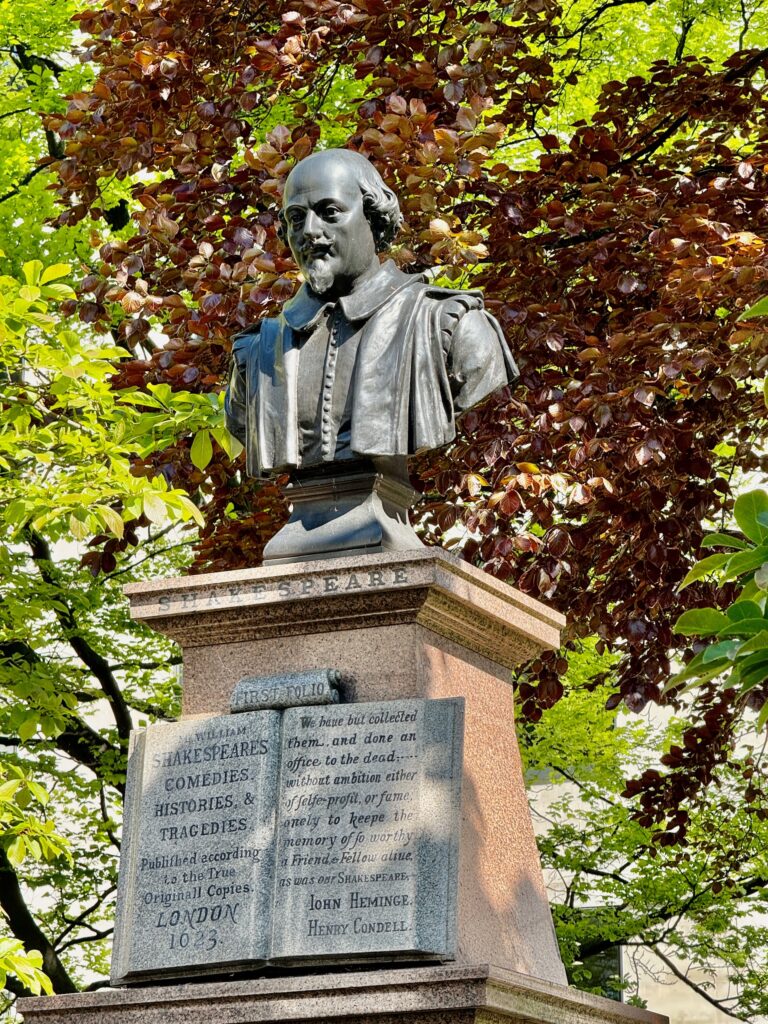
They played a cucial role in compiling and printing the First Folio after his death in 1616 …
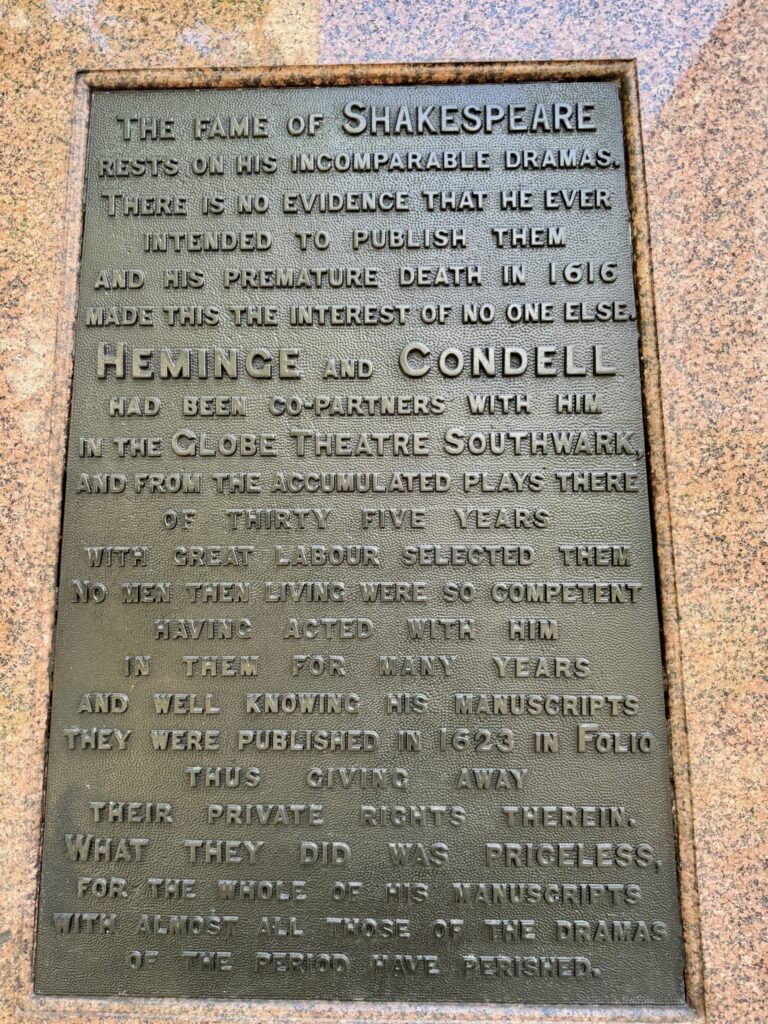
Both lived nearby and were buried in this churchyard …
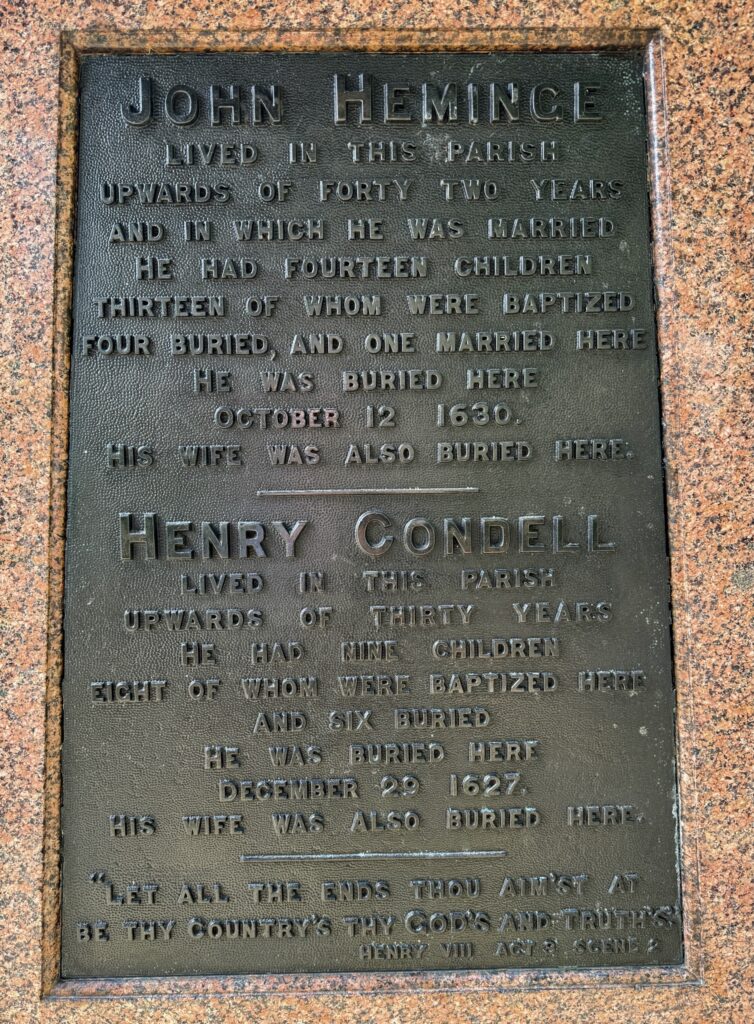
The church was gutted in the Blitz with only the walls remaining standing. The stones were subsequently transported to Fulton, Missouri in 1966 and rebuilt in the grounds of Westminster College as a memorial to Winston Churchill who had made his Sinews of Peace, “Iron Curtain” speech in the College gymnasium in 1946.
Remember you can follow me on Instagram …
